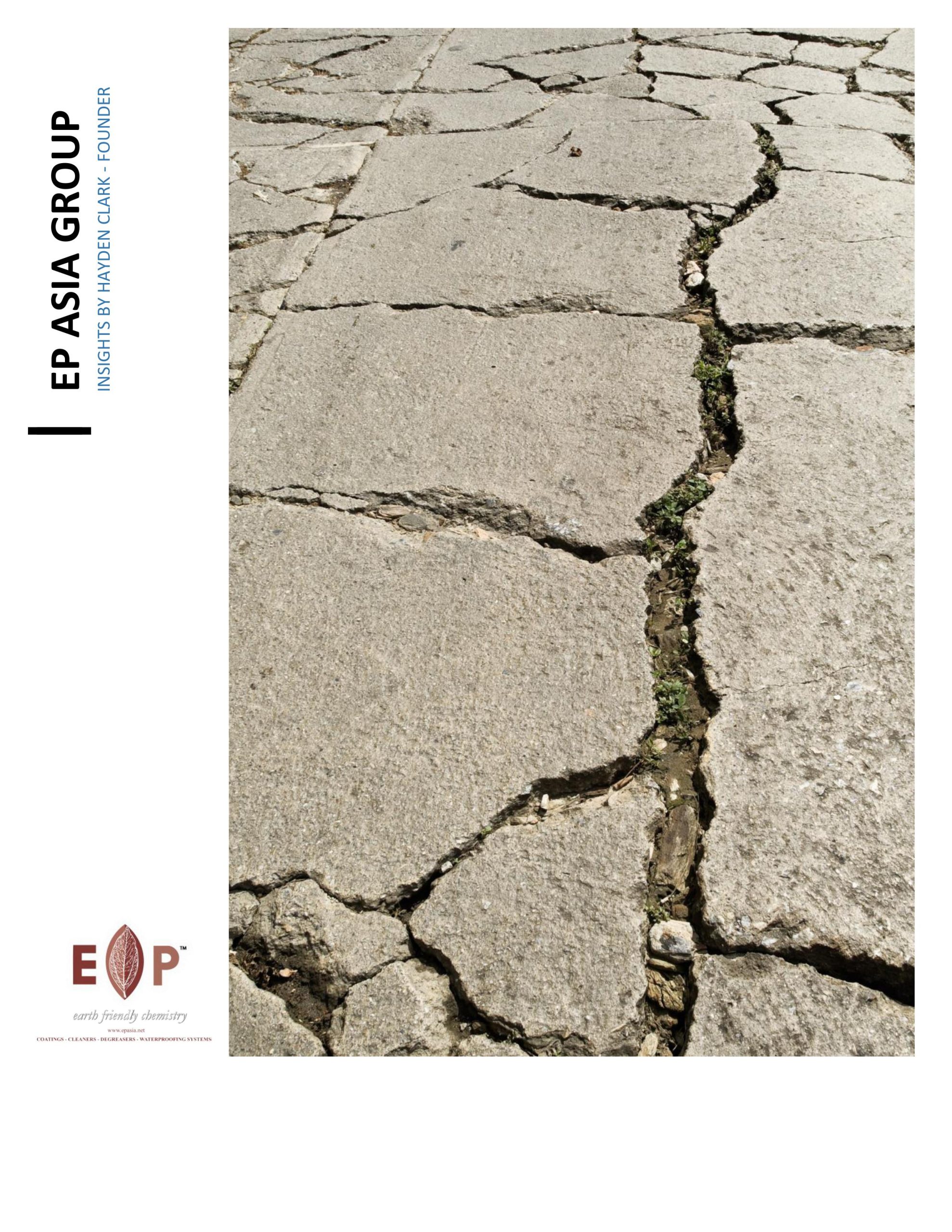
Usually, contractors aim to complete the concrete placement, pouring, and stripping swiftly to advance with the project. Misunderstanding the basics of concrete by thinking defects can be covered with a sand/cement mixture.
TIP #1
In Malaysia, the use of curing agents like water curing for concrete is uncommon on construction sites.
For one, simple water curing is cheap and easy. Let’s face it anyone can use water to cure concrete.
TIP #2
To cure your concrete using water, simply saturate the slab with water and ensure it stays moist for a full seven days.
For further clarifications or inquires email us at info@epasia.net
Why Does Concrete Crack?
The main cause of concrete cracking worldwide is rapid hydration loss.
So what’s the problem with modern concrete and why does it seem to crack, leak and have so many problems?
Concrete is a fickle material that requires precise placement, proper vibration, and adequate time to cure, harden, and reach its full structural integrity.
A curing agent is crucial to prevent rapid hydration loss.
Typical curing compounds come in liquid form, or can be applied through spraying or rolling, and typically remain effective for approximately 14 days, depending on the type of curing agent used.
The purpose is to allow the concrete sufficient time to undergo the necessary processes. This includes becoming stronger, harder, and denser, resulting in concrete that is durable enough to withstand environmental elements for numerous years.
Properly cured concrete significantly reduces cracks and future issues.
When you find your podium slab at the swimming pool leaking onto your car below, remember that lack of curing leads to cracking.
- What Else Causes Concrete to Crack?
- One common reason is the lack of support. I’ve witnessed numerous instances on construction sites where scaffolding is removed within just five days of the slab being laid. During this period, the concrete is unable to support its weight, leading to excessive stress and eventual cracking. This often results in structural cracks.
Next time you are working with concrete, remember these simple rules.
- Avoid adding excess water to the mix.
- Properly support the structure for a minimum of 14 days.
- Ensure that your team comprehends the correct pouring and vibrating techniques for concrete. Provide training if needed.
- Prevent slurry loss by using sponges on joints/gaps in the form work, an affordable method that yields great outcomes.
- Properly cure the concrete, especially in warm weather.
Best wishes with your concrete work. When done correctly, it will endure for many years without any issues.
